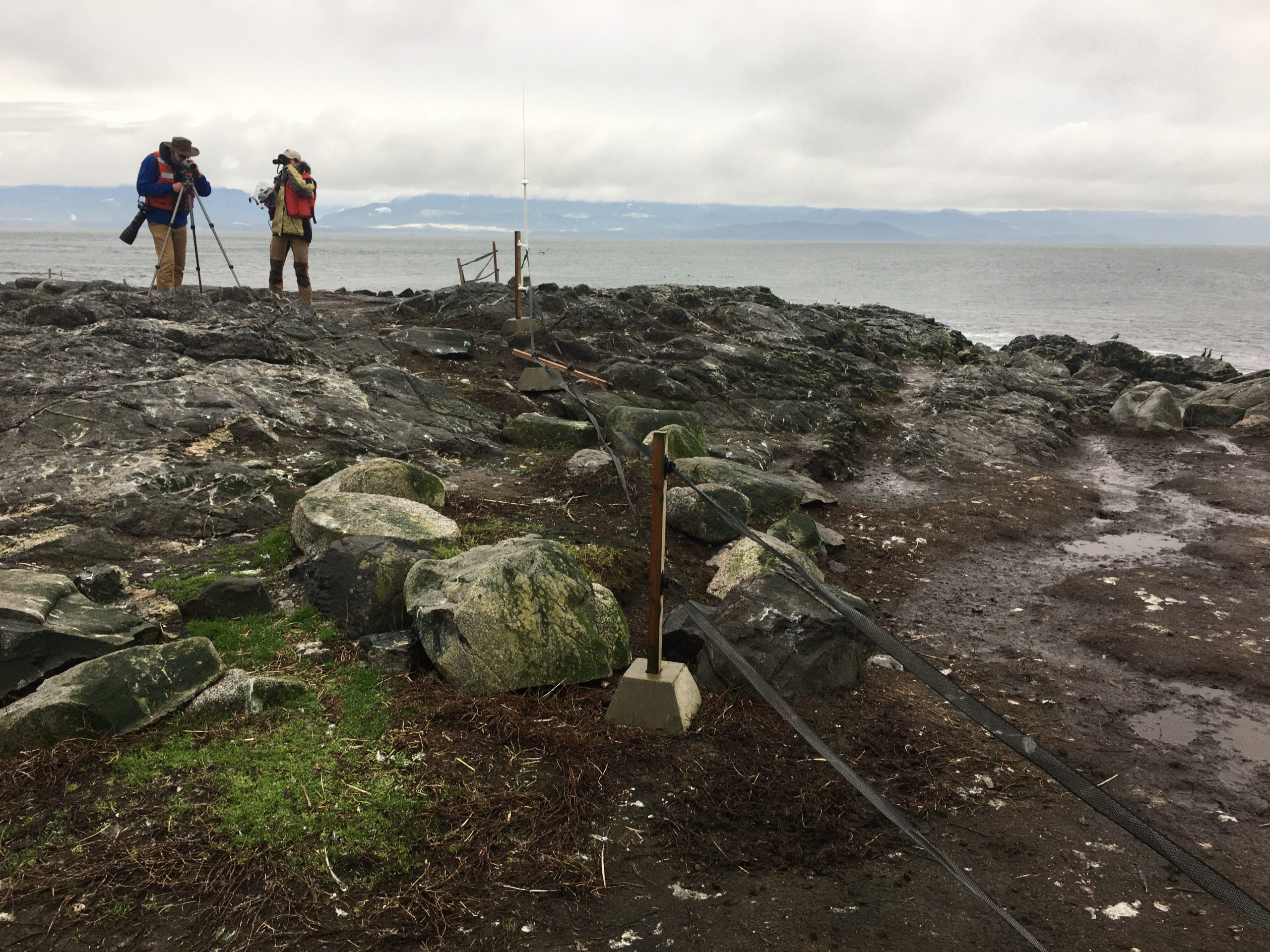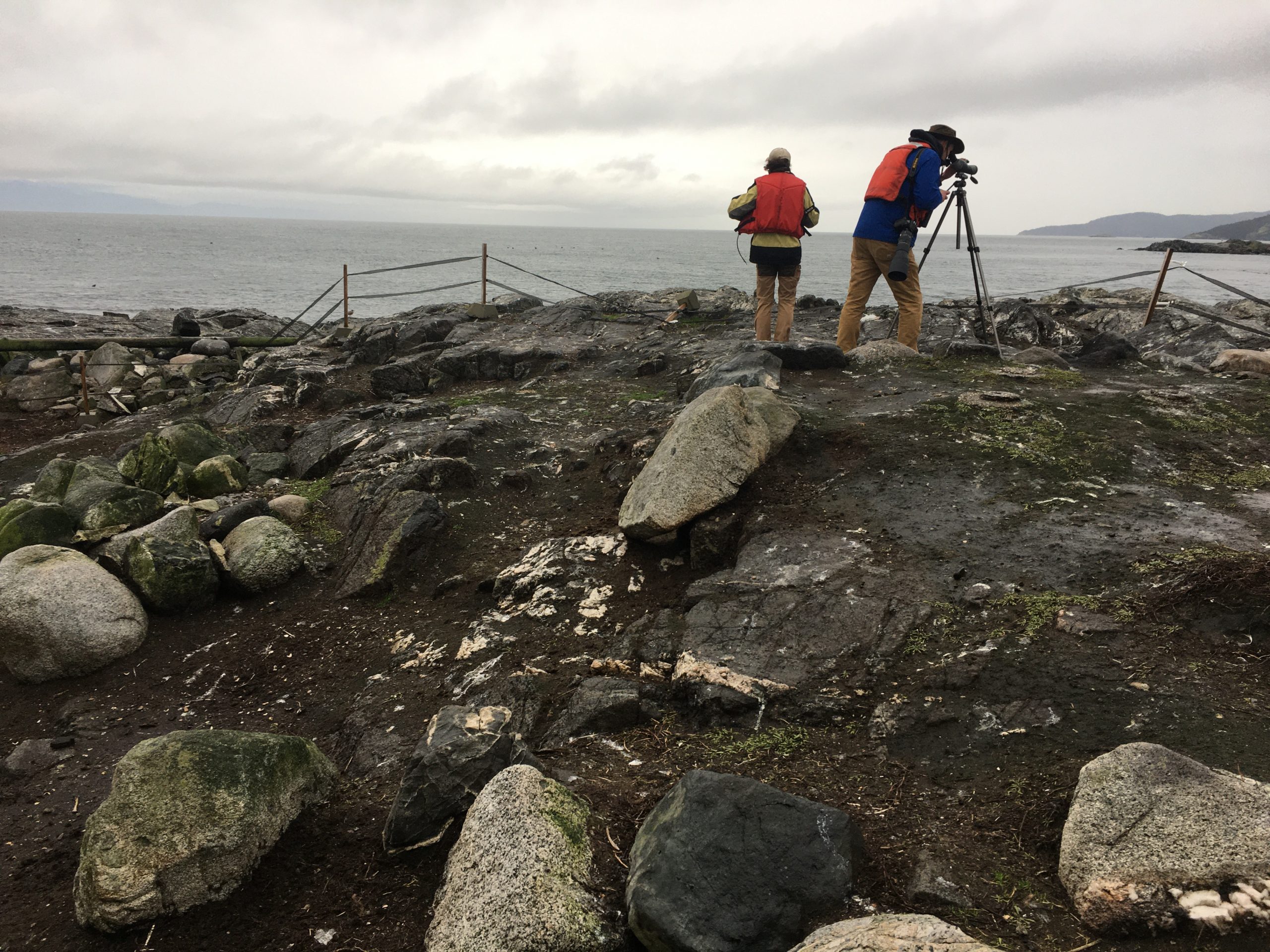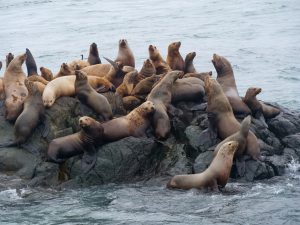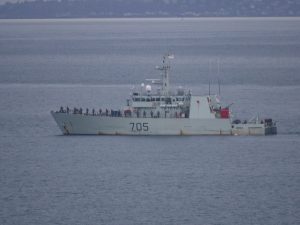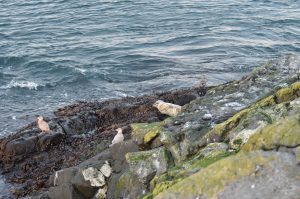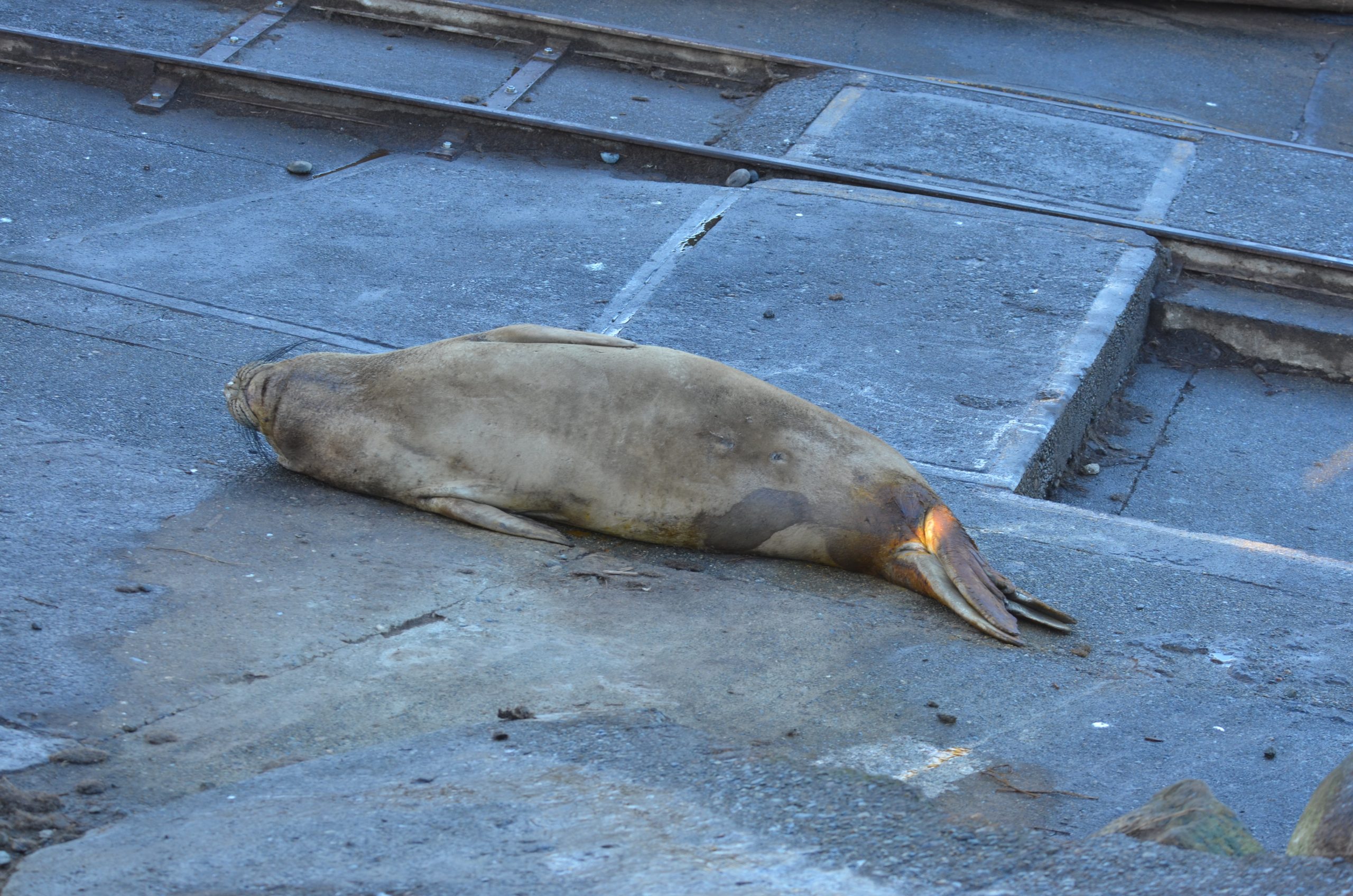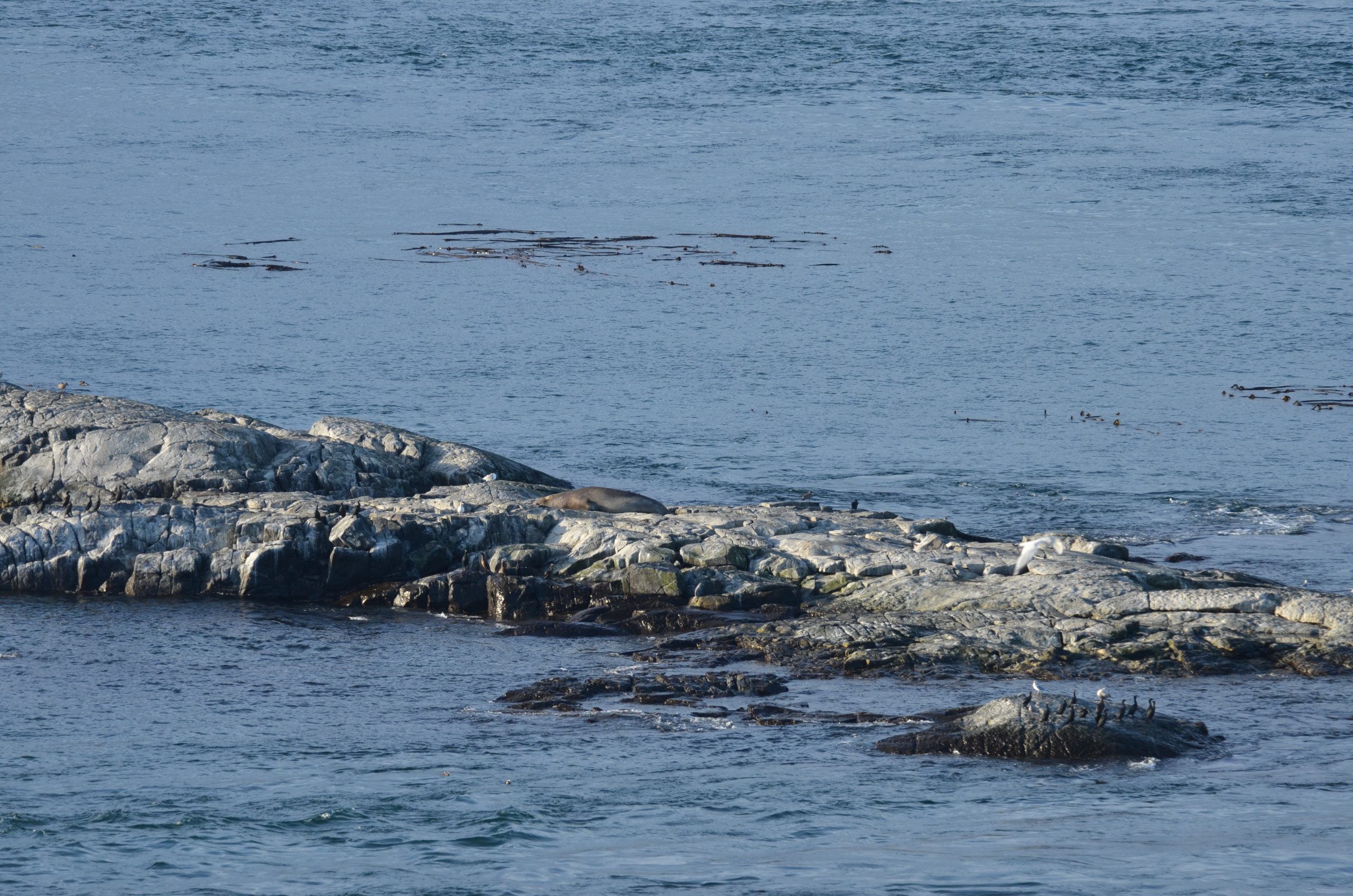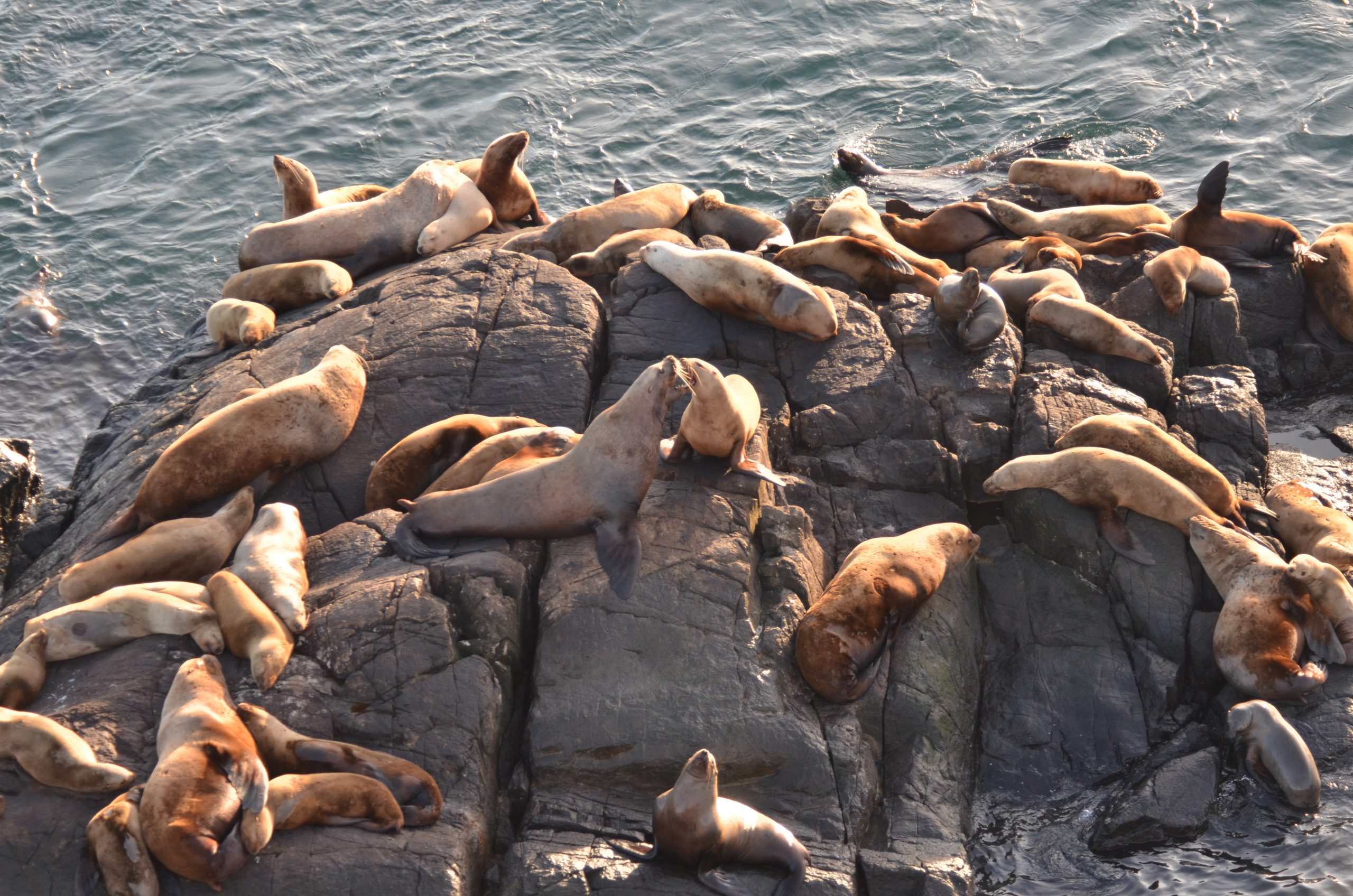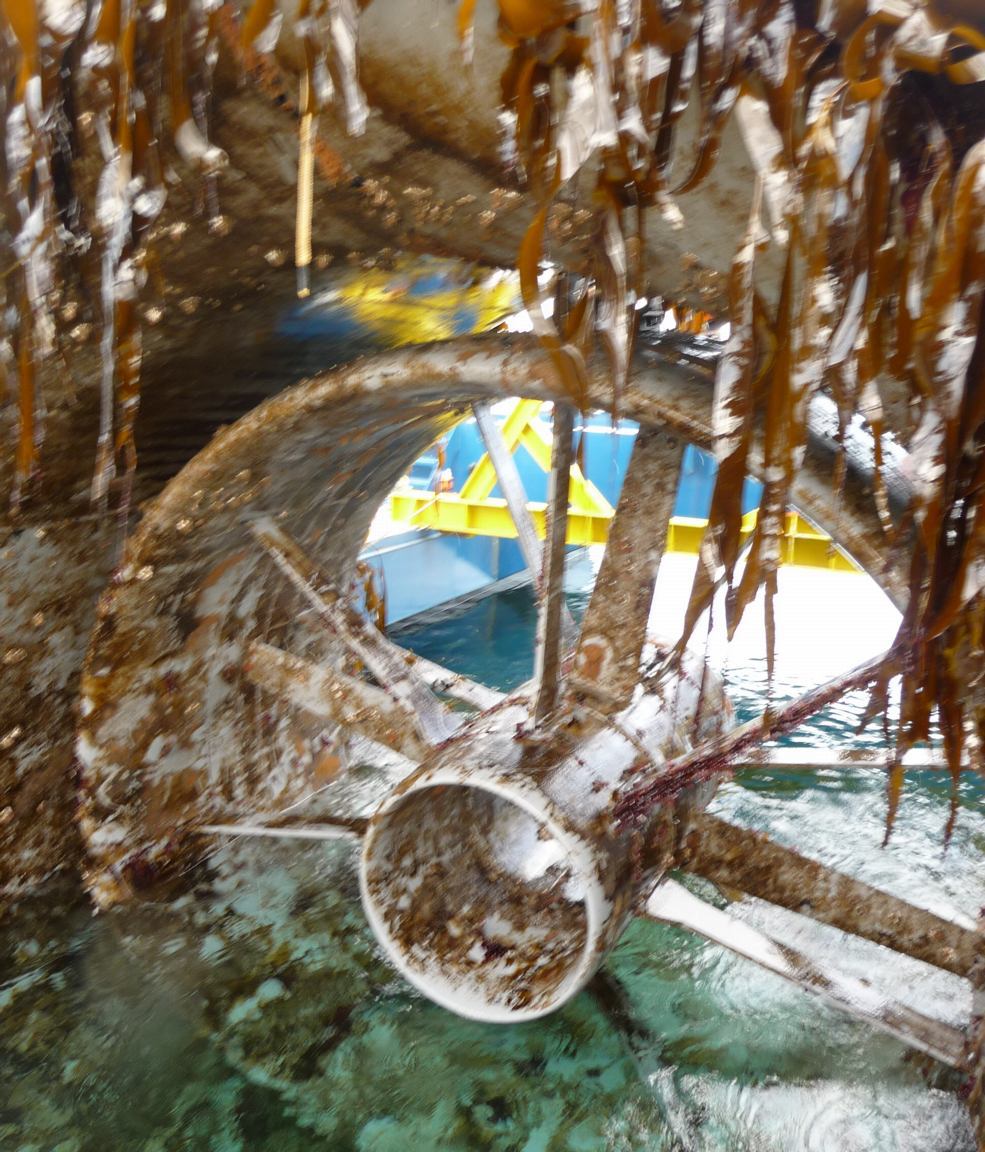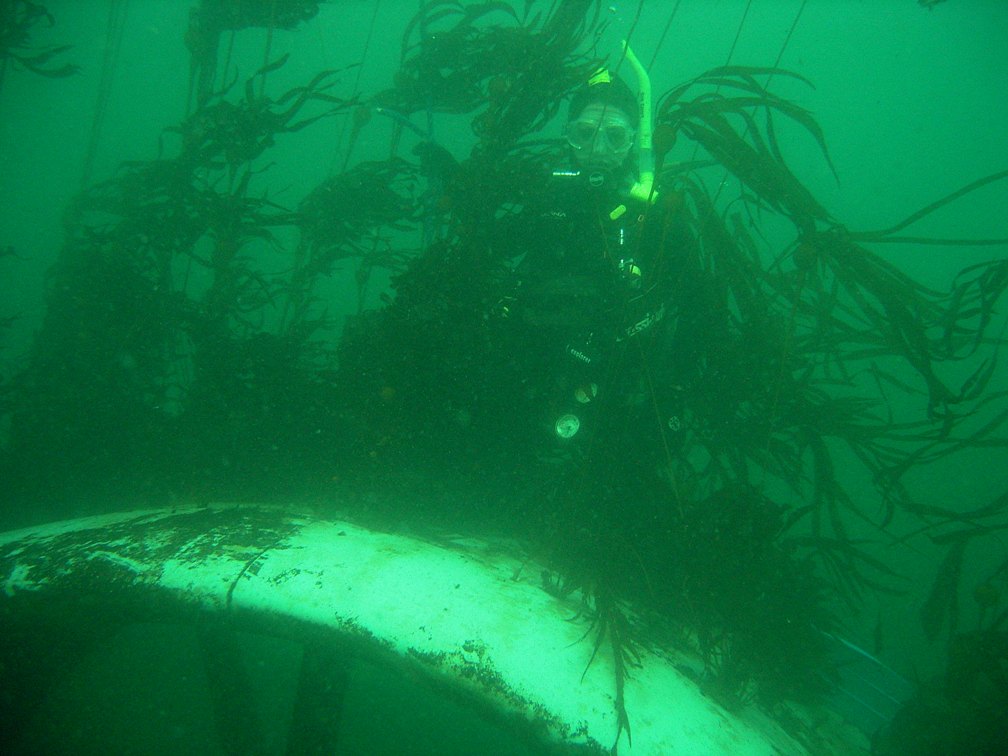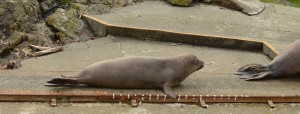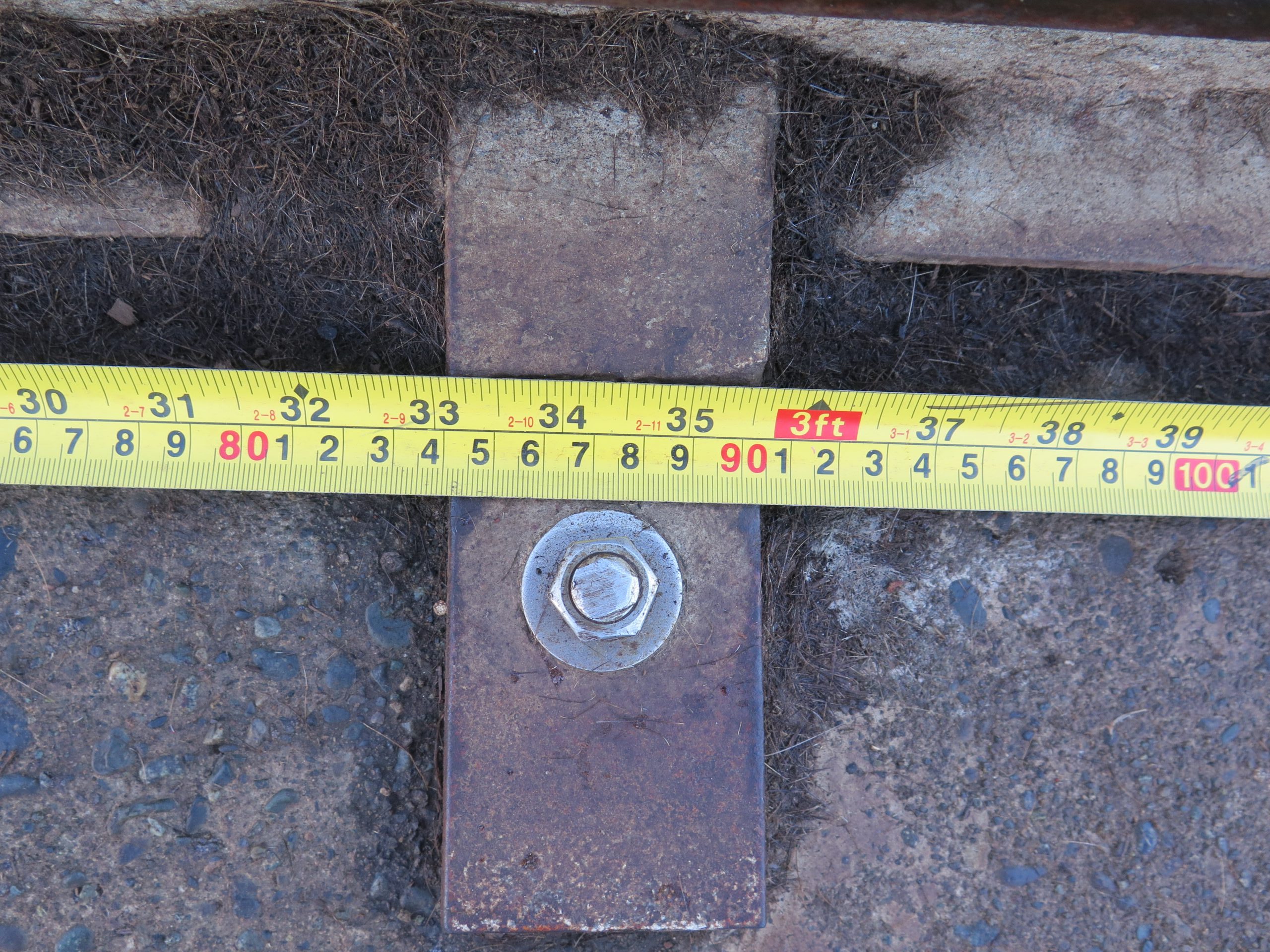Records for 2017 to 2020–
THE ANNUAL CHRISTMAS BIRD COUNT AT RACE ROCKS
This data below may be highlighted, copied and pasted to an open EXCEL file. It will then be usable for statistical manipulations and graphing exercises.Some of the records reflect seabirds observed on the trip from Bentinck Island out while on the boat. Due to inclement weather ( that means a wind above 15 knots from the north East usually, ) In 2018 and 2019 observations were carried out from Great Race Rock Island only, and the surrounding area visible from there.
Linked below are the count returns by year. Included are some of the photographs taken of the members by those who were able to make it out for the counts, –Garry Fletcher
See this link for all past bird counts
2020_ Matthew and Courtney Cameron
2019- Nick Townley ( stormy- observed from land only)
2018- Alex Fletcher (stormy , observed from land only)
| SPECIES | 2018 | 2019 | 2020 | 2021 | 2022 | 2023 | 2024 | 2025 | ||||||||
| Double Crested Cormorant | 10 | 20 | 208 | 10 | – | |||||||||||
| Brandt’s Cormorant’s | 14 | 50 | ? | 750 | ||||||||||||
| Pelagic Cormorant |
18 | 75 | 59 | 20 | ||||||||||||
| Common Murre | 1* | 3500 | 0 | 25 | ||||||||||||
| Rhinocerous Auklet | 0 | 4 | 0 | 0 | ||||||||||||
| Black Oystercatcher | 42 | 24 | 4 | 0 | ||||||||||||
| Black Turnstone | 59 | 38 | 42 | 50 | ||||||||||||
| Surfbird | 0 | 0 | 18 | 0 | ||||||||||||
| Dunlin | 0 | 0 | 0 | 6 | ||||||||||||
| Ruddy Turnstone | 0 | 0 | 0 | 0 | ||||||||||||
| Sanderling | 0 | 0 | 0 | 0 | ||||||||||||
| Pigeon Guillemot | 10 | 0 | 0 | 30 | ||||||||||||
| Marbled Murrelet | 0 | 0 | 0 | 0 | ||||||||||||
| Ancient Murrelet | 0 | 90 | 0 | 0 | ||||||||||||
| Pacific Loon | 0 | 40 | 0 | 0 | ||||||||||||
| Common Loon | 2 | 1 | 0 | 0 | ||||||||||||
| Red Throated Loon | 0 | 1 | 0 | 0 | ||||||||||||
| Canada Goose | 0 | 12 | 0 | 5 | ||||||||||||
| Harlequin Duck | 10 | 10 | 6 | 0 | ||||||||||||
| Long-tailed duck | 0 | 0 | 0 | 0 | ||||||||||||
| Bufflehead | 0 | 0 | 0 | 0 | ||||||||||||
| Surf Scoter | 55 | 4 | 0 | 0 | ||||||||||||
| Common Goldeneye | 0 | 0 | 0 | 0 | ||||||||||||
| White winged Scoter | 0 | 3 | 0 | 1 | ||||||||||||
| Red-breasted merganser | 18* | 2 | 0 | 0 | ||||||||||||
| Common Merganser | 0 | 0 | 0 | 0 | ||||||||||||
| Hooded Merganser | 0 | 0 | 0 | 0 | ||||||||||||
| Red-necked grebe | 0 | 0 | 0 | 0 | ||||||||||||
| Horned Grebe | 1 | 0 | 0 | 0 | ||||||||||||
| Harlequin Duck | 10 | 10 | 6 | 5 | ||||||||||||
| Mew Gull | 14 | 800 | 48 | 3 | ||||||||||||
| Thayer’s (Iceland) Gull | 8 | 150 | 281 | 75 | ||||||||||||
| Herring Gull | 0 | 0 | 0 | 2 | ||||||||||||
| Ring-billed Gull | 0 | 0 | 0 | 0 | ||||||||||||
| Heermann’s Gull | 0 | 0 | 0 | 0 | ||||||||||||
| Iceland Gull | 0 | 0 | 0 | 0 | ||||||||||||
| California Gull | 0 | 0 | 0 | 0 | ||||||||||||
| Western Gull | 0 | 0 | 0 | 1 | ||||||||||||
| WesternXGlaucous-Winged Gull | 2 | 1 | 0 | 0 | ||||||||||||
|
Glaucous-Winged Gull
|
69
|
250
|
0
|
10
|
||||||||||||
| Harlequin Duck | 10 | 10 | 6 | 0 | ||||||||||||
|
Bonapartes Gull
|
0
|
0
|
0
|
0
|
||||||||||||
| Rhinocerous Auklet | 0 | 0 | 0 | 0 | ||||||||||||
| Merlin | 0 | 0 | 0 | 0 | ||||||||||||
| Peregrine Falcon | 0 | 0 | 0 | 0 | ||||||||||||
| Bald Eagle, Immature. | 0 | 0 | 5 | ? | ||||||||||||
| Bald Eagle, adult | 4 | 10 | 25 | 15 | ||||||||||||
| Killdeer | 0 | 0 | 0 | 0 | ||||||||||||
| Rock Sandpiper | 0 | 0 | 0 | 0 | ||||||||||||
| Western Sandpiper | 0 | 0 | 0 | 0 | ||||||||||||
| Black Bellied Plover. | 0 | 0 | 0 | 0 | ||||||||||||
| Red-necked Phalarope | 0 | 0 | 0 | 0 | ||||||||||||
| American Pipit | 0 | 0 | 0 | 0 | ||||||||||||
| European Starling | 0 | 0 | 0 | 0 | ||||||||||||
| Song Sparrow | 0 | 1 | 0 | 0 | ||||||||||||
| Fox Sparrow | 0 | 0 | 1 | 0 | ||||||||||||
| Savannah Sparrow | 0 | 0 | 0 | 0 | ||||||||||||
| Snow Bunting | 0 | 1 | 0 | 0 | ||||||||||||
| North Western Crow | 0 | 0 | 0 | 0 | ||||||||||||
| Raven | 0 | 2 | 2 | 1 | ||||||||||||
| Brown Pelican | 0 | 0 | 0 | 0 | ||||||||||||
| Great Blue Heron | 0 | 0 | 0 | 0 | ||||||||||||
| SPECIES | 2017 | 2018 | 2019 | 2020 | 2021 | 2022 | 2023 | 2024 | 2025 | |||||||








